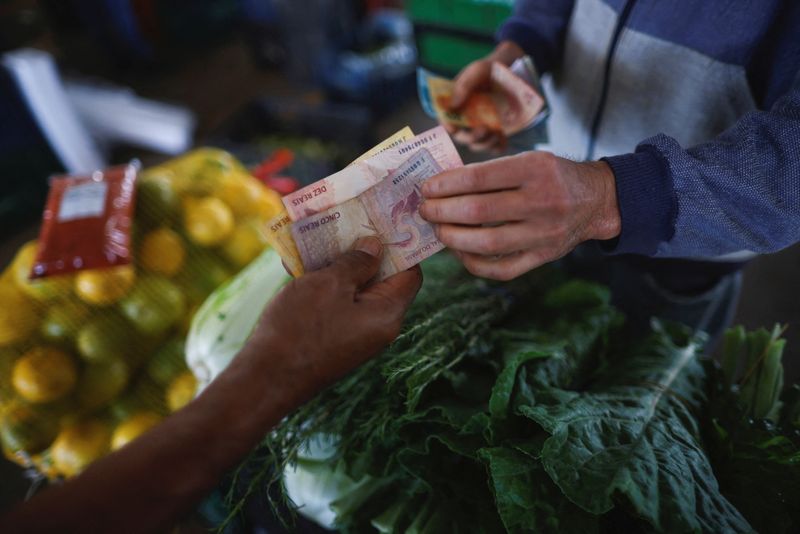By Gabriel Araujo
SAO PAULO (Reuters) - Inflation figures released on Wednesday painted opposite scenarios for Latin America's two largest economies, indicating that Brazil will keep tightening its monetary policy to combat rising prices while Mexico brings its interest rate down.
The annual headline inflation figures in the two countries did not differ that much from each other, but their price trends diverged and should keep monetary policy in the emerging country peers moving in different directions.
In Brazil, annual inflation accelerated in September to 4.42%, in line with market expectations but above the 4.24% reported in the previous month, closing in on the upper limit of the central bank's target range.
Policymakers in the country have vowed to bring inflation back to their 3% target, which has a tolerance margin of plus or minus 1.5 percentage points, meaning they will likely hike interest rates again at their next meeting in November.
The rate-setting committee, known as Copom, had already voted unanimously to embark on a tightening cycle last month, raising borrowing costs by 25 basis points to 10.75% amid inflationary pressures and strong economic activity.
"September's inflation figures will only add to the hawkish mood at the central bank as Copom seeks to shore up its credibility amid concerns about the politicization of monetary policy," Capital Economics economist Jason Tuvey said.
Higher electricity and food prices amid a major drought have weighed on Brazil's inflation index.
In Mexico, meanwhile, 12-month headline inflation slowed to 4.58% in September from 4.99% in the previous month, still well above the 3% target but maintaining a downward trend that has allowed the Bank of Mexico (Banxico) to lower borrowing costs.
Policymakers in Latin America's second-largest economy delivered rate cuts three times this year, including a 25-basis-point reduction last month that brought the benchmark rate down to 10.50%.
"This is a good inflation report and supports the case for further monetary policy easing," Pantheon Macroeconomics' Andres Abadia said. "Underlying inflation pressures continue to ease, and we expect a continued decline in inflation during Q4."
Polls of private economists in each country underscore how Brazil's and Mexico's monetary policies diverge at the moment.
While in Brazil they show interest rates are likely to end this year at 11.75%, implying 50-basis-point hikes at each of the central bank's two remaining 2024 meetings, in Mexico they indicate two cuts of 25 basis points to 10% by year-end.
Banxico governor Victoria Rodriguez acknowledged the bank's governing board may even consider larger cuts going forward, as inflation cools.
However, the easing policy has caused a rift in the board, with some governors calling to hold rates until a clearer downward trend is seen across their price indicators.
By end-2025, the polls suggest, Brazil's rate would be brought down a little to 10.75%, while in Mexico they might dip to 8%.

Brazil's economy has surprised to the upside and should grow around 3% this year, while Mexico's gross domestic product growth is seen at half that by analysts, also a factor policymakers take into account.
"We expect further increases to the Selic to 12% by early 2025," Capital's Tuvey said about Brazil, while adding that in Mexico the inflation report "supports our view that Banxico will cut rates by 25bp at each of the remaining meetings this year."